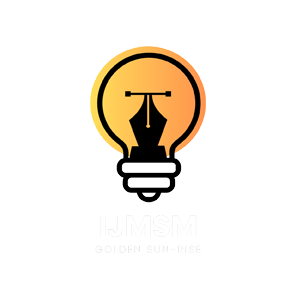Volume 2 Issue 4 | 2025 | View PDF
Paper Id:IJMSM-V2I4P105
doi: 10.71141/30485037/V2I4P105
Workplace Experiences of Garment Workers in Northern Mindanao: Implications for Decent Work and Sustainable Development Goal 8
Lileth O. Ulbeda, Roey C. Sumaoy, Stephany A. Hayahay, Anamie A. Ajon
Citation:
Lileth O. Ulbeda, Roey C. Sumaoy, Stephany A. Hayahay, Anamie A. Ajon, "Workplace Experiences of Garment Workers in Northern Mindanao: Implications for Decent Work and Sustainable Development Goal 8" International Journal of Multidisciplinary on Science and Management, Vol. 2, No. 4, pp. 41-45, 2025.
Abstract:
This study aims to examine the problems encountered by garment workers in Northern Mindanao across eight workplace dimensions: workplace environment, compensation and benefits, job security, skills and training, workload and stress, social and ethical concerns, organizational issues, and client-related challenges. Using a descriptive survey design, data were collected from 100 randomly selected respondents through a validated researcher-developed questionnaire. The results show that workers generally hold positive perceptions of their workplace conditions, with all dimensions rated “Agree.” The workplace environment and compensation and benefits obtained the highest mean scores, indicating that safety standards and welfare programs are well-practiced. Conversely, organizational issues and skills and training received lower ratings, highlighting persistent gaps in career advancement, managerial support, and technological upskilling. These findings suggest that while progress has been made toward achieving decent work standards, further improvements in training, management practices, and equitable compensation are necessary to ensure sustainable labor welfare in the region.
Keywords:
Garment workers, Workplace environment, Compensation and benefits, Job security, Training, Organizational issues, Decent work.
References:
1. M. Parpiani, "Made in South Asia: Centering Labor in Textile and Garment Manufacturing Work, 1970s to 2020s," International Labor and Working-Class History, pp. 198–205, vol. 107, 2024.
2. R. F. Syed and R. Karim, "Labor Welfare Policy, Practices, and Deficiencies with the ILO: Evidence from the Garment Industry of Bangladesh," Labor History, pp. 339–355, vol. 66, no. 3, 2025.
3. N. Sharmin and D. Khanam, "Role of Readymade Garment Sector in Changing the Livelihood Pattern of Rural Women: An Analysis of Garment Workers in Bangladesh," IMPACT: International Journal of Research in Applied, Natural and Social Sciences, pp. 27–36, vol. 5, no. 11, 2017.
4. J. Jenkins, "Struggle in the Garment Sector," Theory & Struggle, 2020.
5. M. Raisul Islam, M. Tofayel Hossain, S. K. Mallik, and M. Abeedur Rahman, "Bangladeshi Garment Industry Welfare Policies and Employee Satisfaction: An Empirical Study," International Journal of Research and Innovation in Social Science (IJRISS), pp. 334–346, vol. 9, no. 15, 2025.
6. V. B. Paqueo, A. J. Orbeta, and L. A. Lanzona, "The Impact of Legal Minimum Wages on Employment, Income, and Poverty Incidence in the Philippines," Philippine Institute for Development Studies (PIDS), Quezon City, 2016.
7. B.B. Velasco, "Dynamics of Union Organizing in Three Garment Factories in the Cavite Ecozone," Philippine Journal of Labor and Industrial Relations, pp. 121–157, vol. 39, 2023.
8. BusinessMirror, "Garments sector: Pay hike, tariffs spell ‘perfect storm’," BusinessMirror, 2025. Online: https://businessmirror.com.ph/2025/09/05/garments-sector-pay-hike-tariffs-spell-perfect-storm/
9. R. Prentice, G. De Neve, A. Mezzadri, and K. N. Ruwanpura, "Health and Safety in Garment Workers’ Lives: Setting a New Research Agenda," Geoforum, pp. 157–160, vol. 88, 2018.
10. H. Kabir, M. Maple, M. S. Islam, and K. Usher, "A Qualitative Study of the Working Conditions in the Readymade Garment Industry and the Impact on Workers’ Health and Wellbeing," Environmental and Occupational Health Practice, vol. 4, no. 1, 2022.
11. M. S. Ullah, M. R. Islam, M. R. Amin, et al., "The Effects of Compensation, Organizational Commitment, and Job Satisfaction on Work Productivity: Evidence from Readymade Garments Industry in an Emerging Economy," Journal of Infrastructure, Policy and Development, vol. 8, no. 13, pp. 84–94, 2024.
12. R. K. Seidu, E. A. Ofori, B. Eghan, G. K. Fobiri, A. O. Afriyie, and R. Acquaye, "A Systematic Review of Work-Related Health Problems of Factory Workers in the Textile and Fashion Industry," Journal of Occupational Health, vol. 66, no. 1, 2024.
13. Intenational Labour Organization, 2015. Online: https://www.ilo.org/publications/employment-wages-and-working-conditions-asias-garment-sector-finding-new
14. D. Yuan, M. A. I. Gazi, M. A. Rahman, B. K. Dhar, and M. A. Rahaman, "Occupational Stress and Health Risk of Employees Working in the Garments Sector of Bangladesh: An Empirical Study," Frontiers in Public Health, vol. 10, 2022.
15. P. Thwin et al., "Impact of Career Advancement on Employee Retention," 2023.
16. L. Sharma and M. Srivastava, "A Scale to Measure Organizational Stress among Women Workers in the Garment Industry," European Journal of Training and Development, 2022.
17. V. Beloor and C. J. Swamy, "A Study on Job Satisfaction and Employee Welfare in Garment Industries," 2020.
 IJMSM
IJMSM